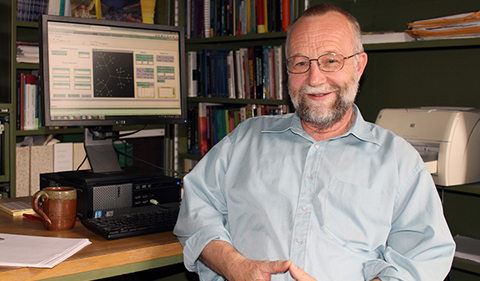Dr. Winfried Just, Professor of Mathematics at Ohio University, says the aim of epidemiology is not to cure diseases, but to identify the control measures such as vaccination and behavior modification that are most effective in limiting the spread of a disease.
“Mathematical models help us understand how the real world works,” he said in his Science Café talk Spread of Contagions: Diseases, Rumors and Mathematical Models. “They can help us understand phenomena that aren’t fun at all…like infectious diseases.”
“Mathematical models come in because real life is complicated and messy and rich in meaning. If we were to pay attention to all of these things all the time, we would be in a mental fog. That’s not good, especially if you’re dealing with danger like infectious diseseses. If we want to understand what really goes on, we need to focus on the essentials. And we want to ignore that there is more. And that is exactly what mathematical models do. They are toy worlds that ignore most of the messy details, cut through the fog, and reduce the situation to its driving mechanisms so that we can understand what’s going on.”
“And nobody gets hurt,” he adds, “as we play with different scenarios without causing any actual suffering” before forming policy recommendations such as how to distribute a small amount of vaccine to the greatest advantage.


















Comments